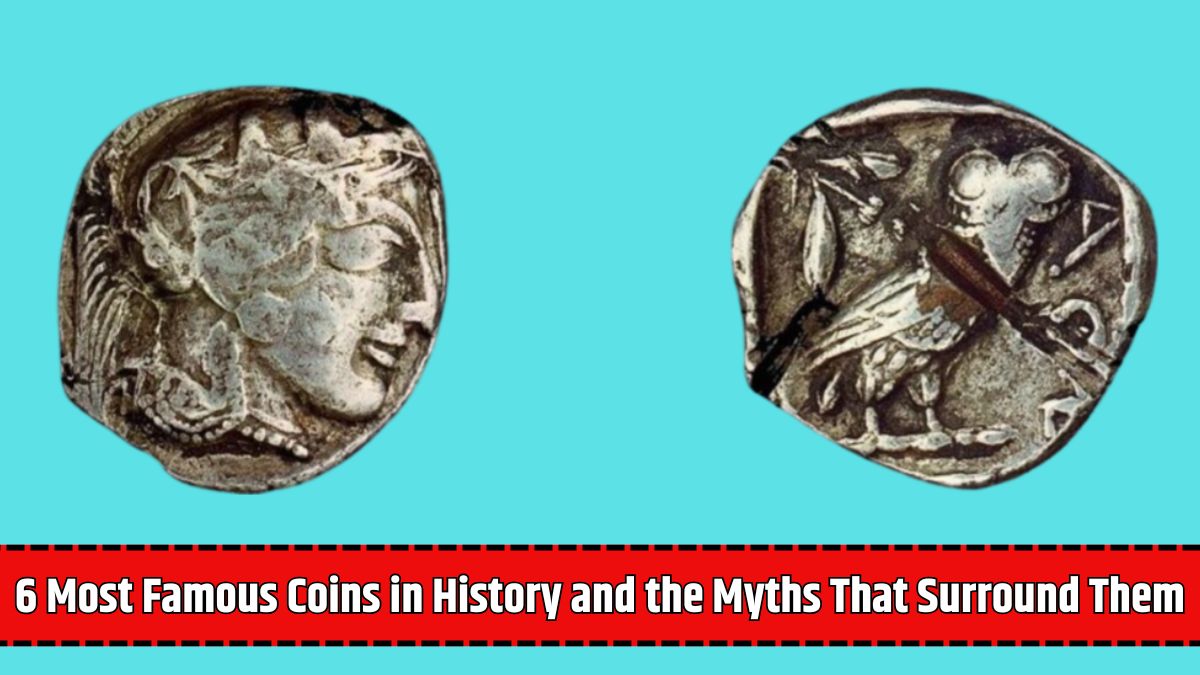Coins aren’t just pieces of metal used for buying things—they often carry stories of empires, heroes, myths, and even curses.
Some coins have become legendary for the incredible tales and superstitions tied to them. Let’s dive into six famous coins and the myths that have made them unforgettable.
1. The Athenian Owl (c. 5th Century BCE)
The Athenian Owl is one of the most famous coins from ancient Greece. It features an owl, symbolizing wisdom, on one side and the goddess Athena on the other.
It was widely used during Athens’ golden age and became a symbol of intelligence and protection.
The Myth:
Legend has it that General Themistocles carried an Athenian Owl coin during the Battle of Salamis in 480 BCE. He believed it gave him divine clarity, and Athens’ victory over the Persians only strengthened this belief.
Why It’s Special:
This coin represents Athens’ military strength and intellectual legacy, making it one of history’s most iconic coins.
2. Imperial Gold Coin of Emperor Augustus (27 BCE – 14 CE)
The gold coins of Emperor Augustus, like the Aureus, were used as powerful tools for propaganda.
They often portrayed Augustus as a god or a peacemaker, reinforcing his image as the stabilizer of the Roman Empire.
The Myth:
Stories say Augustus used these coins as “divine payments” to the gods to ensure Rome’s prosperity. The gold was believed to be sacred, offering mystical protection to the empire.
Why It’s Special:
These coins show how rulers used currency to blend divinity with governance, solidifying their control and legacy.
3. Drachma of Croesus (c. 560 BCE)
King Croesus of Lydia is famous for his enormous wealth, and he issued one of the first gold coins—the Drachma. But legends say his riches were both a blessing and a curse.
The Myth:
According to legend, Croesus consulted the Oracle of Delphi and misunderstood a prophecy. He attacked Persia, leading to his kingdom’s fall. Some say his coins were cursed, bringing bad luck to those who sought wealth through greed.
Why It’s Special:
This coin is a reminder of the dangers of greed and hubris, while also marking an important moment in the history of coinage.
4. Florin of St. Peter (c. 13th Century CE)
The Florin of St. Peter was created under Pope John XXII and was linked to Vatican wealth. It played a significant role in funding St. Peter’s Basilica and was believed to carry divine blessings.
The Myth:
One tale tells of a man who was cured of an illness after holding a Florin close to his heart. This gave the coin a reputation as a miraculous artifact.
Why It’s Special:
This coin highlights how religion, wealth, and superstition intersected in medieval Europe.
5. Spanish Doubloon (c. 16th Century CE)
The Spanish Doubloon was a symbol of Spain’s wealth during the Age of Exploration. Made from New World gold, these coins were coveted by pirates and sailors alike.
The Myth:
Some believed that a pirate captain’s Doubloon could lead its holder to buried treasure or bring supernatural luck. Many sailors thought these coins had magical properties, guiding them to riches.
Why It’s Special:
The Doubloon represents the excitement and danger of the golden age of exploration and piracy.
6. Blackbeard’s Gold Coin (c. 1718 CE)
Blackbeard, the infamous pirate, is said to have carried a unique gold coin that was believed to be a talisman. Known as Blackbeard’s Gold Coin, it supposedly brought him wealth and protection.
The Myth:
After Blackbeard’s death in 1718, the coin disappeared. Legends claim it’s cursed, and treasure hunters who search for it often face tragedy.
Why It’s Special:
This coin fuels countless pirate legends and treasure hunts, symbolizing the thrill and danger of chasing lost riches.
These legendary coins go far beyond their monetary value. They carry the weight of myths, history, and culture, capturing imaginations for generations.
Whether they’re tied to blessings, curses, or heroic deeds, these coins remind us of the stories that shape human history.
















